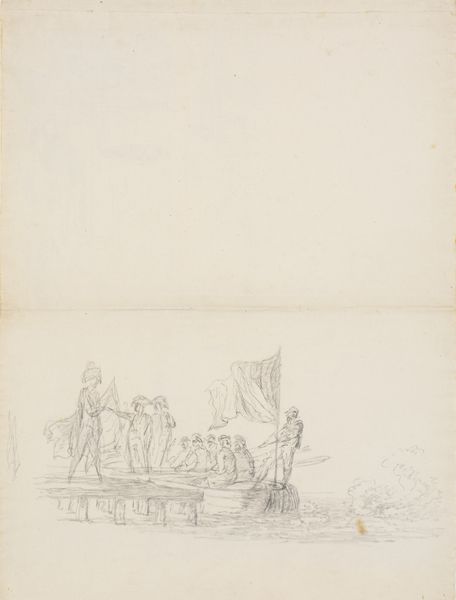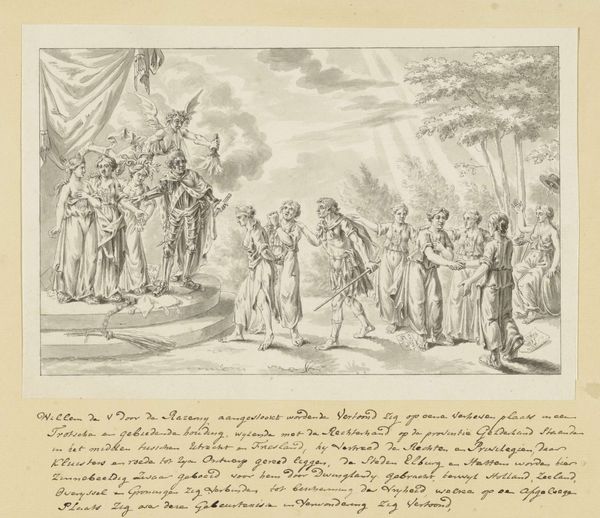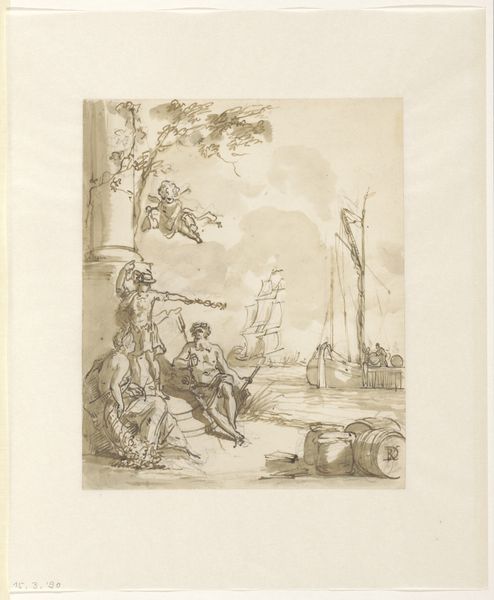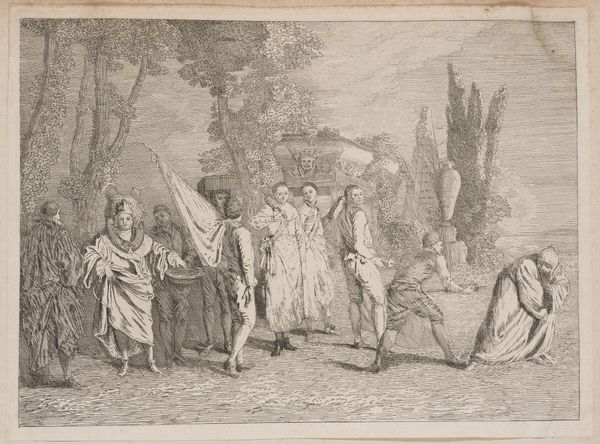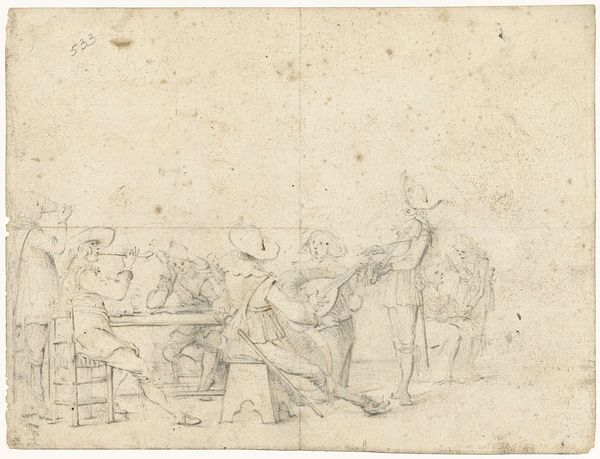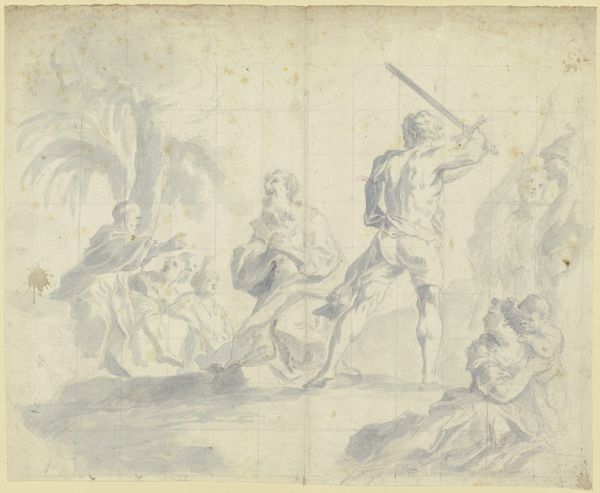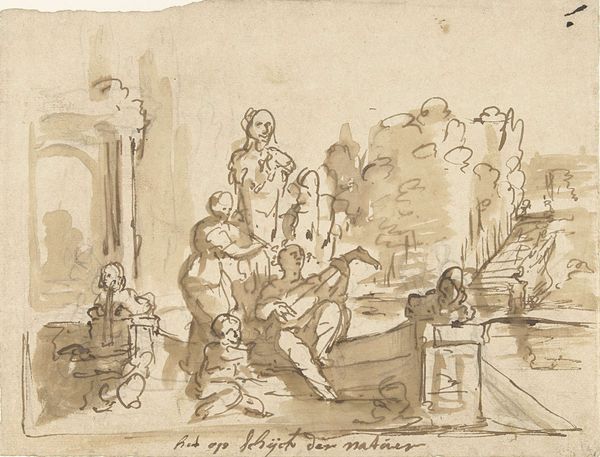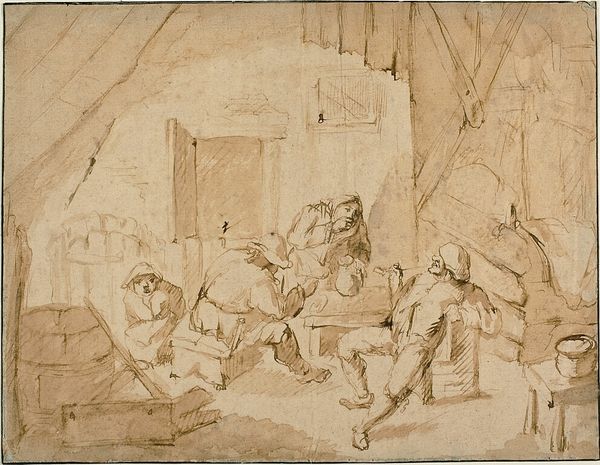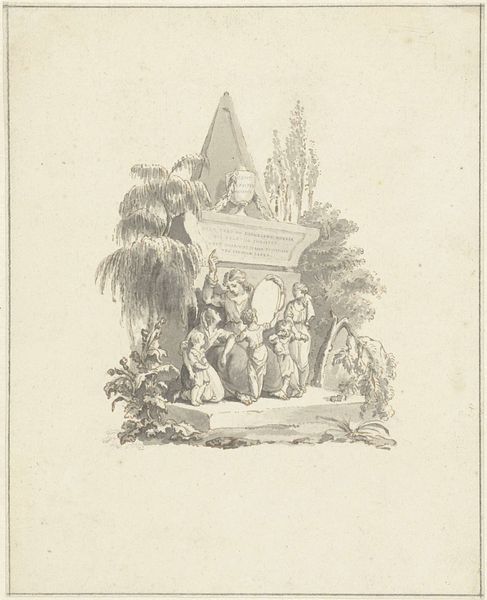
drawing, paper, pen
#
drawing
#
figuration
#
paper
#
pen
#
history-painting
#
italian-renaissance
Dimensions: height 188 mm, width 263 mm
Copyright: Rijks Museum: Open Domain
Pietro Testa made this drawing, "Last Communion of a Saint," with pen and brown ink in the 17th century. It depicts a saint receiving their final Eucharist, surrounded by heavenly figures and grieving onlookers. Testa created this work in Italy, a society shaped by the Catholic Church. The Church was, for centuries, a powerful institution that influenced not only religious life but also politics, culture, and the arts. Testa’s drawing, with its religious subject matter, reflects the Church's presence in artistic production. Here, the artist makes use of the visual codes of religious art to imbue the image with meaning. The halo around the saint’s head, for instance, signifies their holiness. Similarly, the angels above evoke the divine realm, adding a layer of spiritual significance to the scene. By researching the religious practices, patronage systems, and artistic conventions of 17th-century Italy, we can better understand the social conditions that shaped Testa's artistic production. Art history, then, is not just about aesthetics; it's about understanding the intricate relationship between art and society.
Comments
No comments
Be the first to comment and join the conversation on the ultimate creative platform.
